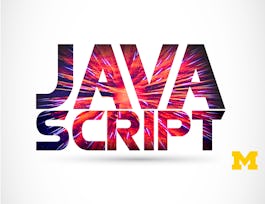The web today is almost unrecognizable from the early days of white pages with lists of blue links. Now, sites are designed with complex layouts, unique fonts, and customized color schemes. This course will show you the basics of Cascading Style Sheets (CSS3). The emphasis will be on learning how to write CSS rules, how to test code, and how to establish good programming habits.


Introduction to CSS3
This course is part of Web Design for Everybody: Basics of Web Development & Coding Specialization
Taught in English
Some content may not be translated


Instructors: Colleen van Lent, Ph.D.
212,042 already enrolled
Included with 
Course
(9,347 reviews)
97%
What you'll learn
Understand the importance of the separation of content and style.
Write a simple CSS rule that can modify the colors and fonts on a web page.
Modify the appearance of the text on a page using width, line-height, and text transformation.
Skills you'll gain
Details to know

Add to your LinkedIn profile
3 quizzes
Course
(9,347 reviews)
97%
See how employees at top companies are mastering in-demand skills

Build your subject-matter expertise
- Learn new concepts from industry experts
- Gain a foundational understanding of a subject or tool
- Develop job-relevant skills with hands-on projects
- Earn a shareable career certificate


Earn a career certificate
Add this credential to your LinkedIn profile, resume, or CV
Share it on social media and in your performance review

There are 5 modules in this course
Welcome to Introduction to CSS3! In this course you will learn how to style your pages by taking advantage of the power of CSS3. We will focus on both proper syntax (how to write your styling rules) and the importance of accessibility design (making sure that your style enhances your site, not make it harder to navigate). It is so important that you jump in ready to make mistakes and typos in this course. The only way you will really understand the material is to practice typing it in on your own as often as possible.
What's included
10 videos7 readings1 quiz1 peer review1 app item
Colors and fonts are just the start to styling your page. The nice thing about starting with these properties is that they are usually very straightforward to implement. You pick a color and boom - instant, expected results. This week you will learn more about something called the display property. If you took the HTML course with us you know that some elements (like images) can be displayed side-by-side on the screen while others (like paragraphs) are placed underneath each other. I really like showing people the grid and flex properties to give you a little more power about where things can go on the screen. After learning how to style links and lists we will talk about more advanced selectors . Have you ever noticed on a web page that some links are blue and others are purple, depending upon if you have clicked on the links? How is it possible to style some anchor tags and not others?
What's included
10 videos10 readings1 quiz1 peer review1 app item
This week has my favorite styling -- the box model. Learning how to add borders, padding, and margin can really make your page attractive. We end this week with the subject of positioning -- how to get elements to stick to a certain part of your page. Think about annoying pop-up ads. How do the programmers get them to stay RIGHT IN THE MIDDLE OF THE SCREEN despite the fact that you keep trying to scroll them away.
What's included
3 videos7 readings1 quiz
This week will be heavy on demos. You will learn how to style pseudo-classes (e.g. a link that has been visiting, an element that has the mouse hovering over it) and pseudo-elements (e.g. the first-letter of a heading, the first line of a paragraph). These elements are not difficult to style, but do require careful coding. The final step to completing this course is the completion of the peer-graded project. You will have the chance to demonstrate the ability to follow styling guidelines while still putting your own personal touch on the project. Just remember, you need to validate your work for proper syntax and accessibility.
What's included
8 videos3 readings1 peer review1 app item
If you would like to do more now that you have finished this course, I have a few recommendations. The most important thing is that you continue to practice your skills and always have "something" that you are working on.
What's included
2 readings
Instructors


Offered by
Recommended if you're interested in Mobile and Web Development

University of Michigan

University of Michigan

University of Michigan

University of Michigan
Why people choose Coursera for their career




Learner reviews
Showing 3 of 9347
9,347 reviews
- 5 stars
82.25%
- 4 stars
15.40%
- 3 stars
1.82%
- 2 stars
0.18%
- 1 star
0.32%
New to Mobile and Web Development? Start here.

Open new doors with Coursera Plus
Unlimited access to 7,000+ world-class courses, hands-on projects, and job-ready certificate programs - all included in your subscription
Advance your career with an online degree
Earn a degree from world-class universities - 100% online
Join over 3,400 global companies that choose Coursera for Business
Upskill your employees to excel in the digital economy
Frequently asked questions
Access to lectures and assignments depends on your type of enrollment. If you take a course in audit mode, you will be able to see most course materials for free. To access graded assignments and to earn a Certificate, you will need to purchase the Certificate experience, during or after your audit. If you don't see the audit option:
The course may not offer an audit option. You can try a Free Trial instead, or apply for Financial Aid.
The course may offer 'Full Course, No Certificate' instead. This option lets you see all course materials, submit required assessments, and get a final grade. This also means that you will not be able to purchase a Certificate experience.
When you enroll in the course, you get access to all of the courses in the Specialization, and you earn a certificate when you complete the work. Your electronic Certificate will be added to your Accomplishments page - from there, you can print your Certificate or add it to your LinkedIn profile. If you only want to read and view the course content, you can audit the course for free.
If you subscribed, you get a 7-day free trial during which you can cancel at no penalty. After that, we don’t give refunds, but you can cancel your subscription at any time. See our full refund policy.

